Olga Kolesnikova
Hybrid Extractive Abstractive Summarization for Multilingual Sentiment Analysis
Jun 07, 2025Abstract:We propose a hybrid approach for multilingual sentiment analysis that combines extractive and abstractive summarization to address the limitations of standalone methods. The model integrates TF-IDF-based extraction with a fine-tuned XLM-R abstractive module, enhanced by dynamic thresholding and cultural adaptation. Experiments across 10 languages show significant improvements over baselines, achieving 0.90 accuracy for English and 0.84 for low-resource languages. The approach also demonstrates 22% greater computational efficiency than traditional methods. Practical applications include real-time brand monitoring and cross-cultural discourse analysis. Future work will focus on optimization for low-resource languages via 8-bit quantization.
Multilingual Sentiment Analysis of Summarized Texts: A Cross-Language Study of Text Shortening Effects
Mar 31, 2025Abstract:Summarization significantly impacts sentiment analysis across languages with diverse morphologies. This study examines extractive and abstractive summarization effects on sentiment classification in English, German, French, Spanish, Italian, Finnish, Hungarian, and Arabic. We assess sentiment shifts post-summarization using multilingual transformers (mBERT, XLM-RoBERTa, T5, and BART) and language-specific models (FinBERT, AraBERT). Results show extractive summarization better preserves sentiment, especially in morphologically complex languages, while abstractive summarization improves readability but introduces sentiment distortion, affecting sentiment accuracy. Languages with rich inflectional morphology, such as Finnish, Hungarian, and Arabic, experience greater accuracy drops than English or German. Findings emphasize the need for language-specific adaptations in sentiment analysis and propose a hybrid summarization approach balancing readability and sentiment preservation. These insights benefit multilingual sentiment applications, including social media monitoring, market analysis, and cross-lingual opinion mining.
Advancing Sentiment Analysis in Tamil-English Code-Mixed Texts: Challenges and Transformer-Based Solutions
Mar 30, 2025
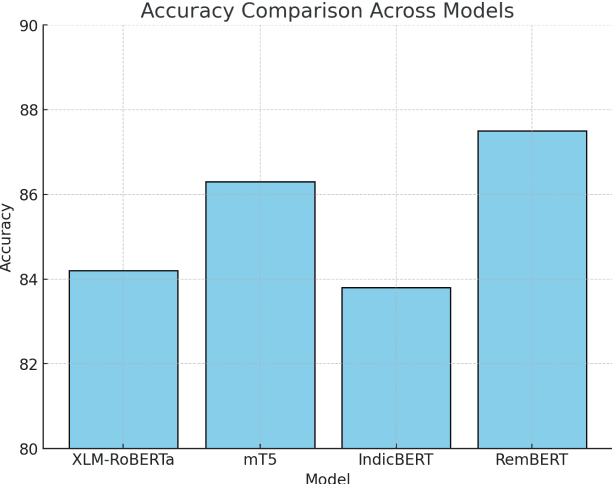


Abstract:The sentiment analysis task in Tamil-English code-mixed texts has been explored using advanced transformer-based models. Challenges from grammatical inconsistencies, orthographic variations, and phonetic ambiguities have been addressed. The limitations of existing datasets and annotation gaps have been examined, emphasizing the need for larger and more diverse corpora. Transformer architectures, including XLM-RoBERTa, mT5, IndicBERT, and RemBERT, have been evaluated in low-resource, code-mixed environments. Performance metrics have been analyzed, highlighting the effectiveness of specific models in handling multilingual sentiment classification. The findings suggest that further advancements in data augmentation, phonetic normalization, and hybrid modeling approaches are required to enhance accuracy. Future research directions for improving sentiment analysis in code-mixed texts have been proposed.
Advanced Machine Learning Techniques for Social Support Detection on Social Media
Jan 06, 2025
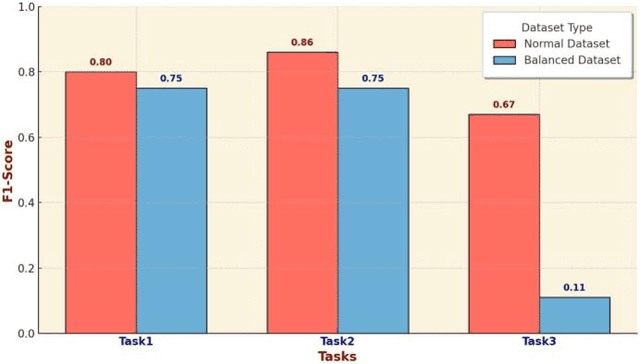

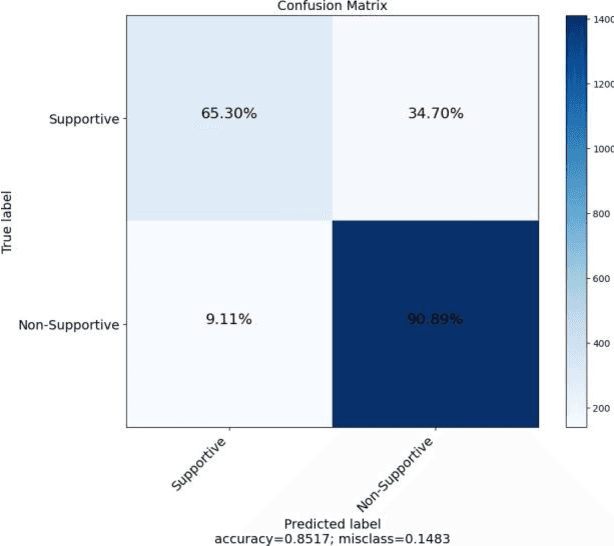
Abstract:The widespread use of social media highlights the need to understand its impact, particularly the role of online social support. This study uses a dataset focused on online social support, which includes binary and multiclass classifications of social support content on social media. The classification of social support is divided into three tasks. The first task focuses on distinguishing between supportive and non-supportive. The second task aims to identify whether the support is directed toward an individual or a group. The third task categorizes the specific type of social support, grouping it into categories such as Nation, LGBTQ, Black people, Women, Religion, and Other (if it does not fit into the previously mentioned categories). To address data imbalances in these tasks, we employed K-means clustering for balancing the dataset and compared the results with the original unbalanced data. Using advanced machine learning techniques, including transformers and zero-shot learning approaches with GPT3, GPT4, and GPT4-o, we predict social support levels in various contexts. The effectiveness of the dataset is evaluated using baseline models across different learning approaches, with transformer-based methods demonstrating superior performance. Additionally, we achieved a 0.4\% increase in the macro F1 score for the second task and a 0.7\% increase for the third task, compared to previous work utilizing traditional machine learning with psycholinguistic and unigram-based TF-IDF values.
Evaluating the Capabilities of Large Language Models for Multi-label Emotion Understanding
Dec 17, 2024Abstract:Large Language Models (LLMs) show promising learning and reasoning abilities. Compared to other NLP tasks, multilingual and multi-label emotion evaluation tasks are under-explored in LLMs. In this paper, we present EthioEmo, a multi-label emotion classification dataset for four Ethiopian languages, namely, Amharic (amh), Afan Oromo (orm), Somali (som), and Tigrinya (tir). We perform extensive experiments with an additional English multi-label emotion dataset from SemEval 2018 Task 1. Our evaluation includes encoder-only, encoder-decoder, and decoder-only language models. We compare zero and few-shot approaches of LLMs to fine-tuning smaller language models. The results show that accurate multi-label emotion classification is still insufficient even for high-resource languages such as English, and there is a large gap between the performance of high-resource and low-resource languages. The results also show varying performance levels depending on the language and model type. EthioEmo is available publicly to further improve the understanding of emotions in language models and how people convey emotions through various languages.
Ethio-Fake: Cutting-Edge Approaches to Combat Fake News in Under-Resourced Languages Using Explainable AI
Oct 03, 2024Abstract:The proliferation of fake news has emerged as a significant threat to the integrity of information dissemination, particularly on social media platforms. Misinformation can spread quickly due to the ease of creating and disseminating content, affecting public opinion and sociopolitical events. Identifying false information is therefore essential to reducing its negative consequences and maintaining the reliability of online news sources. Traditional approaches to fake news detection often rely solely on content-based features, overlooking the crucial role of social context in shaping the perception and propagation of news articles. In this paper, we propose a comprehensive approach that integrates social context-based features with news content features to enhance the accuracy of fake news detection in under-resourced languages. We perform several experiments utilizing a variety of methodologies, including traditional machine learning, neural networks, ensemble learning, and transfer learning. Assessment of the outcomes of the experiments shows that the ensemble learning approach has the highest accuracy, achieving a 0.99 F1 score. Additionally, when compared with monolingual models, the fine-tuned model with the target language outperformed others, achieving a 0.94 F1 score. We analyze the functioning of the models, considering the important features that contribute to model performance, using explainable AI techniques.
Exploring Sentiment Dynamics and Predictive Behaviors in Cryptocurrency Discussions by Few-Shot Learning with Large Language Models
Sep 04, 2024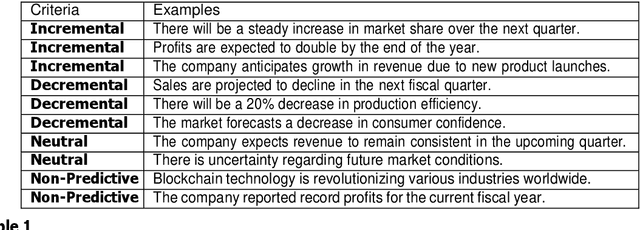
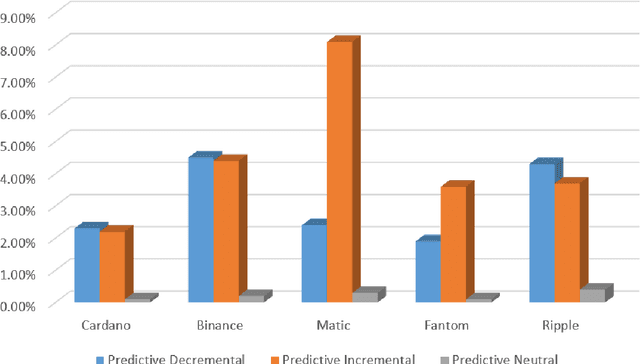
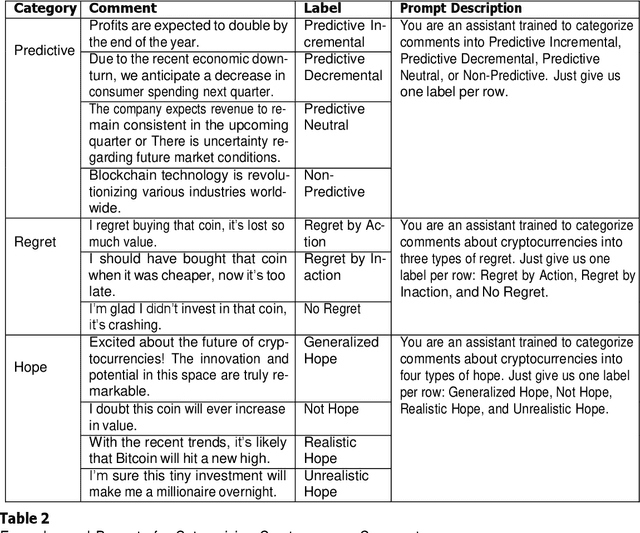
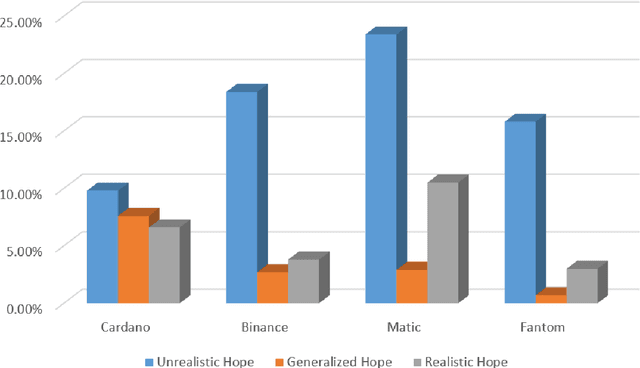
Abstract:This study performs analysis of Predictive statements, Hope speech, and Regret Detection behaviors within cryptocurrency-related discussions, leveraging advanced natural language processing techniques. We introduce a novel classification scheme named "Prediction statements," categorizing comments into Predictive Incremental, Predictive Decremental, Predictive Neutral, or Non-Predictive categories. Employing GPT-4o, a cutting-edge large language model, we explore sentiment dynamics across five prominent cryptocurrencies: Cardano, Binance, Matic, Fantom, and Ripple. Our analysis reveals distinct patterns in predictive sentiments, with Matic demonstrating a notably higher propensity for optimistic predictions. Additionally, we investigate hope and regret sentiments, uncovering nuanced interplay between these emotions and predictive behaviors. Despite encountering limitations related to data volume and resource availability, our study reports valuable discoveries concerning investor behavior and sentiment trends within the cryptocurrency market, informing strategic decision-making and future research endeavors.
Analyzing Emotional Trends from X platform using SenticNet: A Comparative Analysis with Cryptocurrency Price
May 06, 2024Abstract:This study delves into the relationship between emotional trends from X platform data and the market dynamics of well-known cryptocurrencies Cardano, Binance, Fantom, Matic, and Ripple over the period from October 2022 to March 2023. Leveraging SenticNet, we identified emotions like Fear and Anxiety, Rage and Anger, Grief and Sadness, Delight and Pleasantness, Enthusiasm and Eagerness, and Delight and Joy. Following data extraction, we segmented each month into bi-weekly intervals, replicating this process for price data obtained from Finance-Yahoo. Consequently, a comparative analysis was conducted, establishing connections between emotional trends observed across bi-weekly intervals and cryptocurrency prices, uncovering significant correlations between emotional sentiments and coin valuations.
NLP Progress in Indigenous Latin American Languages
Apr 08, 2024



Abstract:The paper focuses on the marginalization of indigenous language communities in the face of rapid technological advancements. We highlight the cultural richness of these languages and the risk they face of being overlooked in the realm of Natural Language Processing (NLP). We aim to bridge the gap between these communities and researchers, emphasizing the need for inclusive technological advancements that respect indigenous community perspectives. We show the NLP progress of indigenous Latin American languages and the survey that covers the status of indigenous languages in Latin America, their representation in NLP, and the challenges and innovations required for their preservation and development. The paper contributes to the current literature in understanding the need and progress of NLP for indigenous communities of Latin America, specifically low-resource and indigenous communities in general.
EthioMT: Parallel Corpus for Low-resource Ethiopian Languages
Mar 28, 2024



Abstract:Recent research in natural language processing (NLP) has achieved impressive performance in tasks such as machine translation (MT), news classification, and question-answering in high-resource languages. However, the performance of MT leaves much to be desired for low-resource languages. This is due to the smaller size of available parallel corpora in these languages, if such corpora are available at all. NLP in Ethiopian languages suffers from the same issues due to the unavailability of publicly accessible datasets for NLP tasks, including MT. To help the research community and foster research for Ethiopian languages, we introduce EthioMT -- a new parallel corpus for 15 languages. We also create a new benchmark by collecting a dataset for better-researched languages in Ethiopia. We evaluate the newly collected corpus and the benchmark dataset for 23 Ethiopian languages using transformer and fine-tuning approaches.
 Add to Chrome
Add to Chrome Add to Firefox
Add to Firefox Add to Edge
Add to Edge